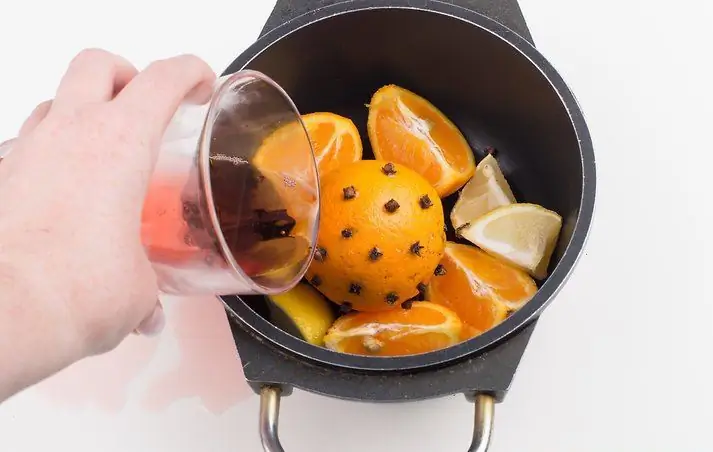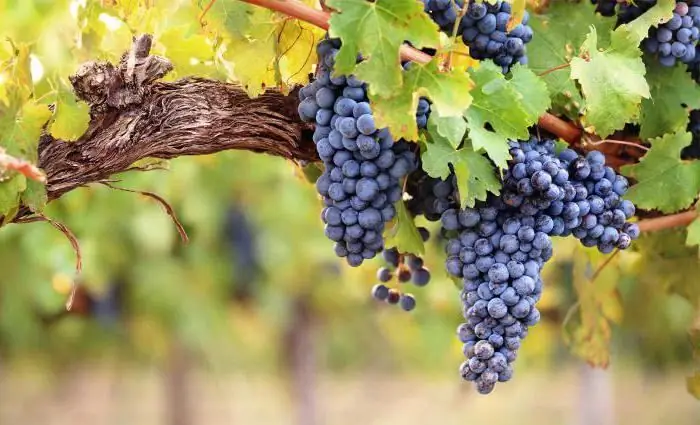2025 Author: Isabella Gilson | [email protected]. Last modified: 2025-01-23 12:50:30
A bottle of wine is no surprise these days. They learned to produce this drink a very long time ago, even in antiquity. But such a type of container as a bottle, into which it is poured today, appeared quite recently. Depending on the type of wine and the place of its production, it can have a different shape and volume. Its modern look is a long way to perfection. The wine bottle has a very interesting history of its own.

Glass containers have become widely used for pouring a heady drink relatively recently. When people learned how to make wine, they used completely different containers to store it. For example, in Egypt, amphoras (clay vessels) were used. Then humanity learned the techniques of glass making. People realized that it perfectly preserves all taste qualities. But a bottle of wine of a standard size appeared only at the beginning of the 19th century. The best volume for such a liquid is considered to be a container from 700 to 800 milliliters. But there are moreimpressive bottles, the volume of which is 2.3 liters. Gradually, winemakers in many countries adopted the volume of 750 milliliters as a standard, which facilitated the trade in this product.
A bottle of wine also has a certain color. Usually it is green, brown or light glass. Color may indicate belonging to a particular region. So, in Germany, Moselle wines are bottled in green bottles, Rhine wines are bottled in brown, etc.

The configuration of the bottle is also of great importance. Over the years, it has been found that the cylindrical shape is the most optimal. Firstly, in this form it is convenient to transport it. Secondly, this capacity allows you to improve the storage conditions of wine. It is stored in a horizontal position in the cellars where it matures. The cylindrical shape and this way of storage allows natural cork to remain always moist and prevent air from entering the bottle. In addition, the contact of the wine with the cork gives it a certain taste.

Sometimes the shape that a bottle of wine has indicates the origin and quality of its contents. The Burgundy bottle can be attributed to the classics. This is an elongated container with sloping sides. This form is used by many wine producers in Europe. Chardonnay, Beaujolais, Chablis and other drinks are poured into a Burgundy bottle.
Classic Bordeaux wine bottles are narrow, tall containers. Usually, green glass is used for red wine, and light glass is used for white wine. In suchcontainers are bottled with Bordeaux wines and certain types of drinks made from Cabernet Sauvignon grapes.
Some producers have adopted this form for bottling French, Italian and Spanish dry wines.
In Germany and Alsace, an elongated Rhine bottle is used. The Provencal form resembles an amphora, the Frankish form resembles a flask.
Some German wines are bottled in a triangle shape. For champagne, a very thick glass container is used.
A bottle of wine (or rather its shape) is of great importance for assessing the quality of the content. Many experts can characterize a drink only by the appearance of the container.
The shape of the bottle, the color of the glass is not only information about the wine. These indicators have an aesthetic value. It is also a certain brand that is significant for many connoisseurs of good wine.
Recommended:
"Bad" - beer of American traditions, its history and features

What is the drink known around the world as "Bad"? Beer, and, according to the vast majority, very good. Well, it’s worth talking about how and when it appeared in our lives, and due to what it gained popularity
Pancakes in a bottle. Openwork bottle pancakes: recipe

Of course, sometimes the dough may not turn out the way you would like, but there is some trick that will help to make a quality product. In this article we will talk about how to cook pancakes in a bottle
How to make mulled wine at home? Spices for mulled wine. Which wine is best for mulled wine

Mulled wine is an alcoholic warming drink. It is served in winter in all reputable establishments. But to enjoy this drink, it is not necessary to go to a restaurant. You can easily cook it yourself. How to cook mulled wine at home will be discussed in detail in the article
Varieties of Shavron wine and its history

French table wines by Louis Chavron are popular not only in their homeland, but all over the world. The history of the creation of wine, description and features of red semi-sweet and dry red wine "Shavron"
The history of Italian cuisine, its development, traditions and features

The history of Italian cuisine, from ancient times to modern times. What influenced the formation of Italian cuisine? How has it developed and changed over the centuries?

